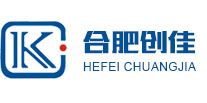Tokyo Motor Show: Technical feast of the Japanese automobile industry
发布日期:2018-04-04 浏览次数:1856
This year's "Tokyo Motor Show" moved to the Tokyo International Exhibition Center, which is closer to the center of Tokyo. The scale of the venue has been reduced compared with previous years. However, compared with the lowest level in 2009, the exhibited products had a substantial return. The theme of this Tokyo Motor Show is “Smart Mobility CITY 2011”. Corresponding to this, on the central booth of all Japanese car companies, new energy vehicles such as electric cars and hybrid vehicles have been launched. This is in stark contrast to the Ashkenazi brand's main push for traditional production models, and is also considered to be a Japanese manufacturer's correction of the collective “aphasia” status of new energy vehicles at the Guangzhou Auto Show not long ago.
The Japanese top three are all new energy and concept cars
“There is almost no traditional mass production vehicle released by the Japanese top three. All of them are new energy and concept vehicles.” The features of the Tokyo Motor Show are clearly highlighted after visiting the entire Tokyo Motor Show vehicle showroom with the same capacity as the Beijing Auto Show. come out. Compared with the last auto show, the biggest change in this Tokyo auto show was the transfer of the main venue from the former Chiba Makuhari International Convention and Exhibition Center to the Tokyo International Exhibition Center. It was also the auto show that returned to Tokyo 24 years later. According to official information, 176 brands and 398 vehicles from 13 countries and regions participated in the exhibition. Japanese local manufacturers are still the protagonists. At the auto show, there are 52 models worldwide, including 26 models of passenger cars, and most of them are concept models equipped with new technologies for hybrid and electric vehicles. With the launch of these new energy concept models, Japanese car manufacturers also formally announced the launch of a new generation of new energy technologies. During the exploration of the first generation of new energy, Toyota and Honda emphasized different aspects of hybrid technology and entered the second generation technology stage. Including plug-in type, pure electric and other diversified new energy technologies, they have begun to become a clear route for Japanese cars.
“I don’t think there will be such a controversy in the future whether the car is an electric car or a plug-in plug-in hybrid car. Because we definitely need more than one car in the future.” Mr. Toyoda’s view represents the commonness of Japanese car companies. Ideas. In order to emphasize the importance of the Japanese automotive industry for new energy technologies, the Auto Show opened the "Smart Mobility CITY 2011" special exhibition hall for small-scale environmental models for the first time, including small and new energy sources for many brands including Mercedes-Benz Smart. The models are all exhibited here, and at the same time, experimental programs such as the “Smart Community” aimed at solving the environmental restrictions of electric vehicles are also used for publicity. “After reading the Tokyo Motor Show, you will feel more real that Chinese car companies have once again fallen behind in terms of new energy sources.” Insiders attending the Tokyo Motor Show over many years said that although several years ago, domestic relevant industry experts have been Emphasizing that new energy vehicles are an opportunity, China's auto companies will stand at the same starting line with global auto giants. However, the facts have proved that the development of the automotive industry is continuous. After several years of trials and explorations, multinational auto giants have basically determined the technical route. Whether it is BMW, GM, or Toyota, Honda, it has been introduced more and more this year. The mature second-generation new energy technology really entered the eve of mass production. However, the new energy “techno feast” presented by Japanese local auto companies did not eliminate the criticism that the “Tokyo Motor Show is increasingly like a local auto show”. As early as February of this year, the Big Three Detroit (GM, Ford, Chrysler) announced that they would not participate in the Tokyo Motor Show. This is after 2009, the Detroit Big Three once again missed the Tokyo Motor Show. In the Tokyo Motor Show where eight exhibition halls were set up, local companies in Japan accounted for almost two-thirds of the exhibitors.
Toyota advertises "rebirth"
“No matter how difficult the manufacturing environment is, how difficult it is to move forward, we will always believe in the potential strength of product manufacturing.” At the 42nd Tokyo Motor Show, which opened on November 30th, Toyota Motor Corporation President Toyoda The man used this sentence as his passionate speech. At the top of the Toyota column in front of him, the huge "Re BORN (rebirth)" announced the determination of Japanese car companies to regroup. At this time, the market share decline and the double blow from the earthquake have not completely dissipated. The chance to see Toyota's passionate speech on "Reborn" was considered by some people in the industry as one of the benefits of the Tokyo Motor Show. In view of this, Toyota Akio gave a speech on the subject of "Never Give Up" at the Tokyo Motor Show. Toyota also specifically made Doraemon appear in his brand new corporate image advertisement. Toyota Akio said, "This robot cat We will use excellent tools for the future to rescue our friends from the difficulties. I firmly believe that at the scene of our product manufacturing, there must be the existence of Doraemon." Honda releases a number of energy-saving cars At the 42nd Tokyo Motor Show in November 30th 2011, Honda released a number of energy-saving vehicles. Honda promised to reduce Honda's carbon dioxide emissions by 30% compared with 2000 by 2020.
At the auto show, Honda introduced the rear-wheel-drive electric double convertible EV-STER, which features a dual-steering lever that is easy to operate and can reach a maximum range of 80 miles.
Takanobu Ito, president of Honda, pointed out that the biggest challenge facing the company is how to improve the energy efficiency of gasoline and diesel-powered internal combustion engines. He hopes to optimize gasoline and diesel engines and use transmissions (CTVs) to combine the two.
In an interview at the Tokyo Motor Show today, Takanobu Ito said the company is developing a hybrid engine that is suitable for medium to large cars.
However, as the largest car manufacturer in Asia, Toyota Motor Corp. said yesterday that it plans to launch a plug-in Prius in Japan at the end of January next year, starting at 3.2 million yen (about US$41030). Toyota said that the new Prius will be very energy-efficient and is expected to travel 61 kilometers per liter. With the help of a lithium-ion battery, the cruising range can reach 26.4 kilometers, and domestic electric outlets can be charged.
Honda general manager Sho Minekawa once pointed out in October that Honda hopes hybrid vehicle sales will account for half of its annual sales in Japan by the end of March next year. Nissan's Nismo division expands significantly. Mainstream models are expected to push high-performance Nismo is Nissan's automotive sports division, but also its high-performance branch. Nissan will use its just-released Juke Nismo concept car as a vane for Nismo's expansion and its brand development. Nissan has announced its adjustment plan for a substantial expansion: the company plans to quickly transform the performance of its mainstream models to expand its Nismo products. There will be many new Nismo adjustment models in dealer showrooms.
“The era of passionate enjoyment for ordinary drivers to experience racing is on their way. Our goal extends Nismo’s driving passion to mainstream models, and the Juke Nismo concept car will showcase everything we can do”, president of Nissan Motor Co., Ltd. And CEO Carlos Ghosn said at a press conference.


